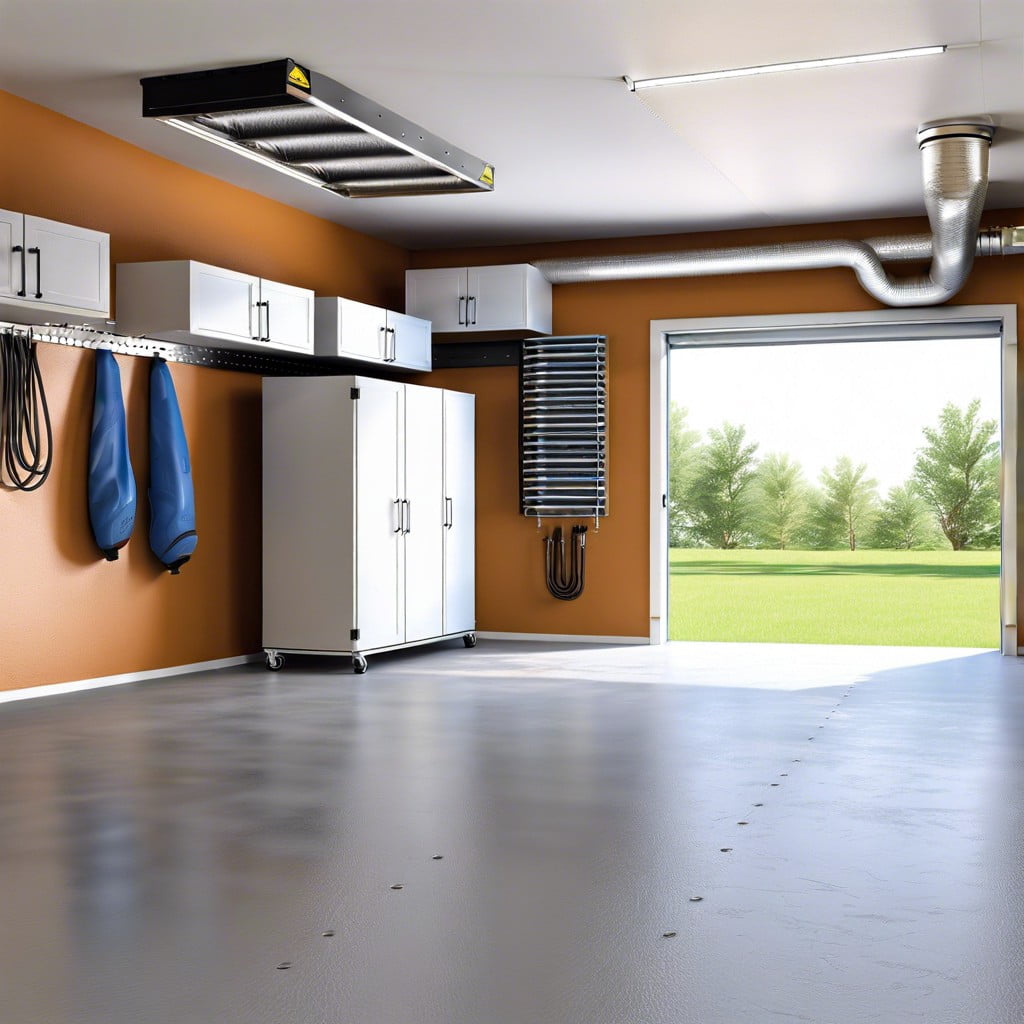Learn how to climate control your garage to transform it into a comfortable workspace or storage area, regardless of the weather outside.
Key takeaways:
- Evaluate garage structure for energy loss
- Insulate and weather strip doors and windows
- Use portable AC units and fans in summer, heaters in winter
- Ensure proper ventilation with passive vents or exhaust fans
- Install smart thermostats for efficient temperature control
Assessing Your Current Garage Structure

Before diving into the grand adventure of climate controlling your garage, take a moment to evaluate the structure you’re working with. Is it more like a sieve than a fortress? Heat or cool air can escape through cracks, poor seals, or thin walls faster than you can say “utility bill spike.”
Start by checking the walls. If they’re unfinished, that’s your blank canvas for boosting energy efficiency. Look at the door and windows (if you have them); are they inviting drafts in? Remember, these are the common culprits for energy loss.
Next, consider the roof and flooring. Heat has a knack for sneaking out through roofs, especially if they’re not properly insulated. Floors can be just as guilty, particularly if they’re made of concrete, which tends to hold onto cold like a snowman in winter.
To sum it up, pinpoint where your garage is losing its battle against the elements. This initial reconnaissance will pave the way for making informed decisions on insulation, heating and cooling solutions. It’s not just about keeping your garage comfy; it’s about not allowing the outside weather to throw a party in your space!
Importance of Insulation & Weather Striping
Proper insulation is the first line of defense against weather tantrums, keeping your garage temperate without cranking up the energy bills. Think of insulation as the fluffy winter coat for your garage; it holds in the warm air during cooler months and keeps out the heat when summer decides to crank up the thermostat.
For the doors and windows, weather stripping is like the secret agent that blocks sneaky drafts and unwanted moisture from infiltrating your space. It’s a simple fix with a strip – apply it along the edges where gaps might invite outdoor elements for a little party inside your garage.
Together, insulation and weather stripping form an energy-saving duo that keeps indoor air in and extreme weather out, making your garage a more functional space year-round, whatever the weather orchestra plays outside.
Summer and Winter Climate Solutions
Oh, the swings of seasonal garage woes! When the summer heat cranks up, consider portable or mounted air conditioning units to keep the space cool and moisture at bay. Worried about the bills? Window or wall-mounted fans can also be a great budget-friendly alternative, whisking away the heat without clearing out your wallet.
Come winter, heaters are your best buddies. Infrared heaters are perfect for targeted warmth, ideal for keeping your fingers nimble during tinkering sessions. Still chilly? Electric garage heaters can be easily mounted on walls or ceilings and typically come with adjustable thermostats, ensuring you’re only using as much energy as you need.
While tempting, avoid using kerosene or propane heaters indoors without proper ventilation. They’re effective but can introduce moisture and harmful gases, turning your cozy cave into a not-so-healthy hangout.
And remember, neither fans nor heaters should be left running unattended; it’s not just about safety, but also about maintaining a warm relationship with your energy bills!
Maintaining Proper Ventilation
Proper ventilation is key to preventing the build-up of harmful fumes and managing temperature fluctuations efficiently. Here are a few pointers to ensure your garage is well-ventilated:
Firstly, consider installing passive vents or exhaust fans. These systems help circulate air, drawing fresh air in and pushing stale air out. Place vents strategically to create a cross breeze that can naturally cool your space during warmer months.
Opening windows and doors can also aid in ventilation, but this method depends on your local climate and security considerations. Adding screened openings can offer a compromise, allowing air flow without compromising security.
Another option is an active ventilation system, such as an HVAC unit with air exchange features or standalone air movers. These are particularly effective in larger garages or workshops where chemicals or heavy machinery increase air quality concerns.
Lastly, regular checks and maintenance of your ventilation system ensure it remains effective and efficient over time. Clean filters, inspect vents, and adjust settings according to seasonal changes to maintain optimal performance.
Smart Thermostats for Efficient Temperature Management
Smart thermostats are the brainiacs of the garage climate control world. With their savvy programming, they adjust the temperature automatically based on your daily routine and preferences. No more fumbling with old dials or switches; a tap on your smartphone sets your garage’s climate from anywhere, at any time.
- Here’s how they play a vital role:
- Efficiency: These devices learn your schedule and tweak the temperature for optimal energy use, saving you money on utility bills.
- Remote Access: Left the house in a hurry? Dial in from your phone and adjust the settings so that your garage isn’t the Sahara by the time you get home.
- Alerts & Maintenance: Get notified when temperatures dip or spike too dramatically, or if it’s time to change a filter—handy, right?
Incorporating a smart thermostat into your garage’s climate control system translates to less guesswork and more precise temperature management. It’s like having a little climate wizard at your fingertips!